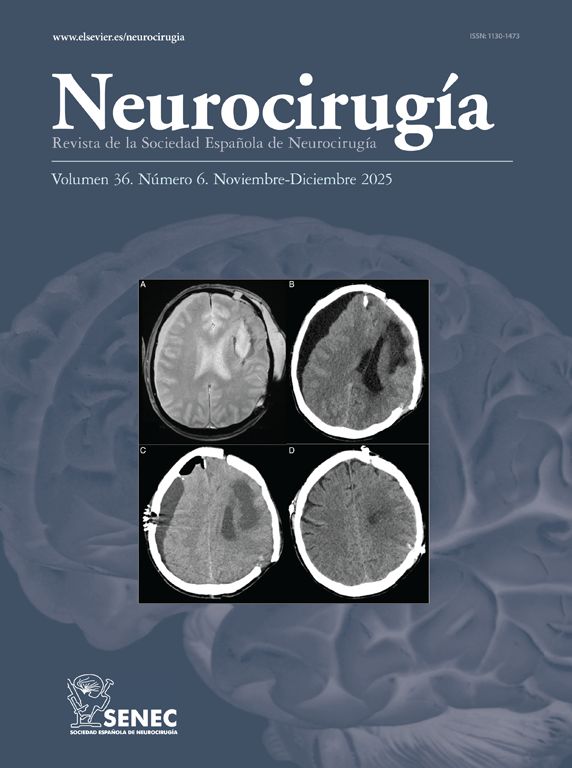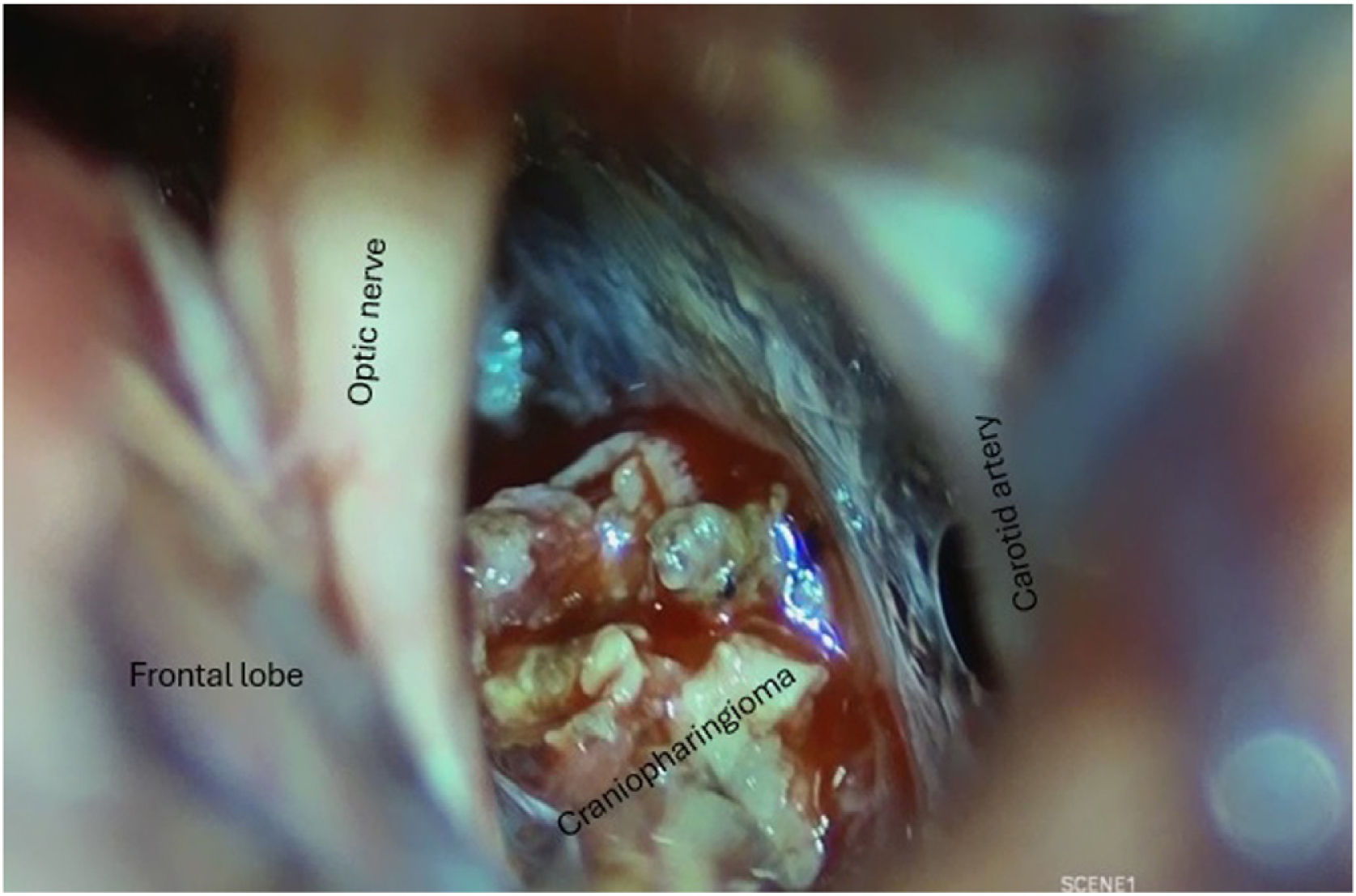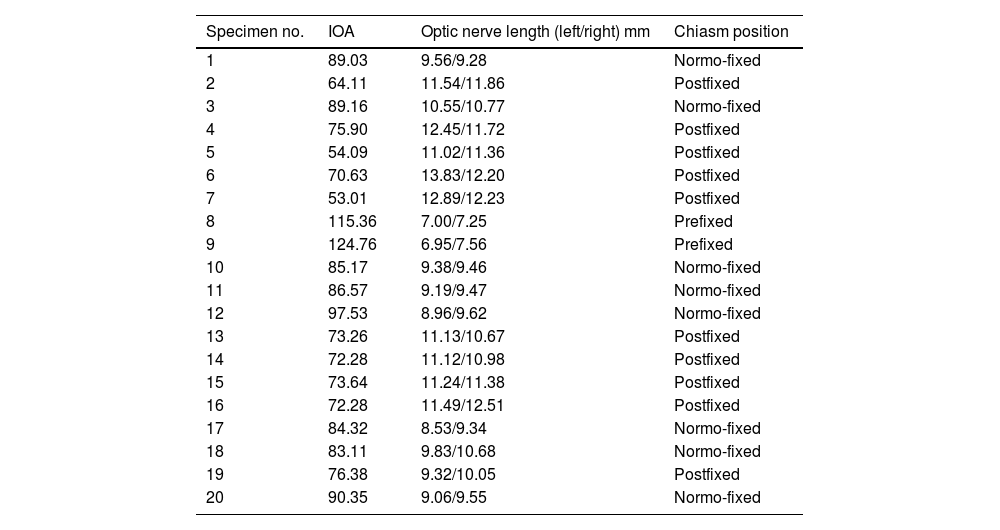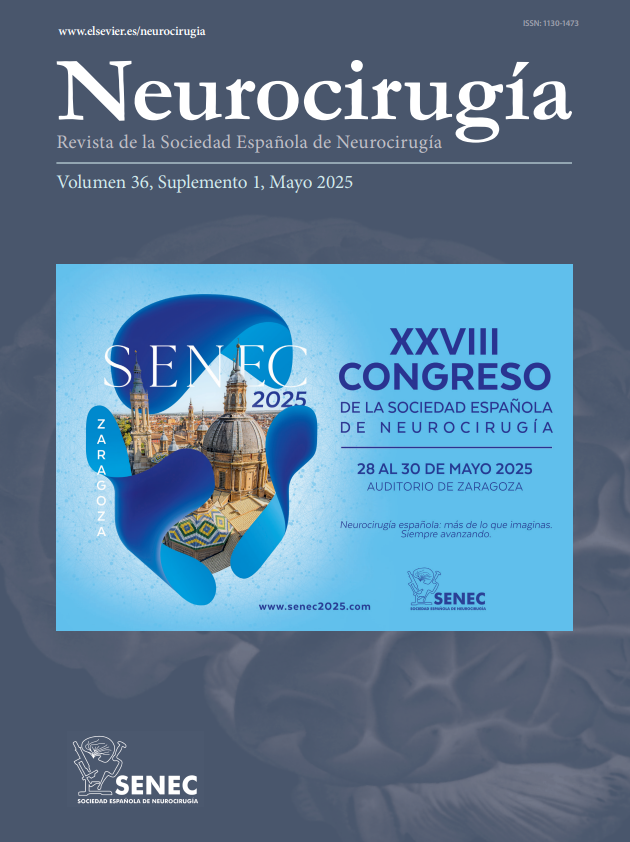The sellar region is an area in the base of the skull that is among the most common sites for tumors of the central nervous system. Surgical interventions are currently performed via different routes. While the optic chiasm occupies its expected position in 70% of the population, it can deviate from this position. In such cases, surgery involving this region becomes more difficult as the known surgical routes are narrowed. Advance awareness of these variations can help surgeons to identify the optimal route for safe surgical intervention in the sellar region. By performing simple measurements of both the lengths of the optic nerves and the angle between them, a surgeon can predict the location of the chiasm.
Materials and methodsTwenty specimens collected from autopsies performed at Bursa Forensic Medicine İnstitute were examined to determine the optic chiasm types and the relationships between the surrounding subchiasmal structures.
ResultsAmong the 20 specimens, we found two prefixed (10%), 10 normo-fixed (50%), and eight postfixed chiasms (40%). The mean interoptic angle was 81.03 (±17.41)⁰. Prefixed chiasms had angles in the range 115.36°–124.76 ° (mean 120.06 [±6.65]⁰), normo-fixed chiasm angles were between 83.11° and 97.53 ° (mean 86.07 [±6.73]⁰), and postfixed chiasms ranged between 53.01 ° and 78.71 ° (mean 69.20 [±9.13]⁰). The length of the right optic nerve ranged between 6.95 and 13.83 mm (mean 10.25 [±1.81] mm), and the length of the left between 7.25 and 12.51 mm (mean 10.40 [±1.47] mm). Obtuse angles indicated that the chiasm was prefixed, and acute angles were indicative of a postfixed chiasm. There was a strong negative correlation between optic nerve lengths and the interoptic angle; thus, as the length of the nerves increases, the interoptic angle becomes more acute.
ConclusionsWe have proposed a simple measurement of the optic nerve lengths and the angle between them to predict the relative location of the OC, which can be done easily on MRI.
La región selar es un área en la base del cráneo que se encuentra entre los sitios más comunes para los tumores del sistema nervioso central. Actualmente las intervenciones quirúrgicas se realizan por diferentes vías. Si bien el quiasma óptico ocupa su posición esperada en el 70% de la población, puede desviarse de esta posición. En tales casos, la cirugía que afecta a esta región se vuelve más difícil a medida que se estrechan las vías quirúrgicas conocidas. El conocimiento previo de estas variaciones puede ayudar a los cirujanos a identificar la ruta óptima para una intervención quirúrgica segura en la región selar. Al realizar mediciones simples de la longitud de los nervios ópticos y del ángulo entre ellos, un cirujano puede predecir la ubicación del quiasma.
Materiales y métodosSe examinaron veinte muestras recolectadas de autopsias realizadas en el Instituto de Medicina Forense de Bursa para determinar los tipos de quiasma óptico y las relaciones entre las estructuras subquiasmáticas circundantes.
ResultadosEntre los 20 especímenes, encontramos dos quiasmas prefijados (10%), 10 normofijados (50%) y ocho postfijados (40%). El ángulo interóptico medio fue de 81,03 (±17,41)⁰. Los quiasmas prefijados tenían ángulos en el rango de 115,36 °–124,76 ⁰ (media 120,06 [±6,65]⁰), los ángulos de quiasma normofijados estaban entre 83,11 °–97,53 ° (media 86,07 [±6,73]⁰) y los quiasmas posfijados oscilaban entre 53,01 °–78,71 ° (media 69,20 [±9,13]⁰). La longitud del nervio óptico derecho osciló entre 6,95 y 13,83 mm (media 10,25 [±1,81] mm) y la longitud del izquierdo entre 7,25 y 12,51 mm (media 10,40 [±1,47] mm). Los ángulos obtusos indicaron que el quiasma tenía un prefijo y los ángulos agudos indicaban un quiasma posfijado. Hubo una fuerte correlación negativa entre la longitud del nervio óptico y el ángulo interóptico; por tanto, a medida que aumenta la longitud de los nervios, el ángulo interóptico se vuelve más agudo.
ConclusionesHemos propuesto una medición simple de la longitud del nervio óptico y el ángulo entre ellos para predecir la ubicación relativa del CO, lo que se puede realizar fácilmente en la resonancia magnética.
Artículo

Si es la primera vez que accede a la web puede obtener sus claves de acceso poniéndose en contacto con Elsevier España en suscripciones@elsevier.com o a través de su teléfono de Atención al Cliente 902 88 87 40 si llama desde territorio español o del +34 932 418 800 (de 9 a 18h., GMT + 1) si lo hace desde el extranjero.
Si ya tiene sus datos de acceso, clique aquí.
Si olvidó su clave de acceso puede recuperarla clicando aquí y seleccionando la opción "He olvidado mi contraseña".















